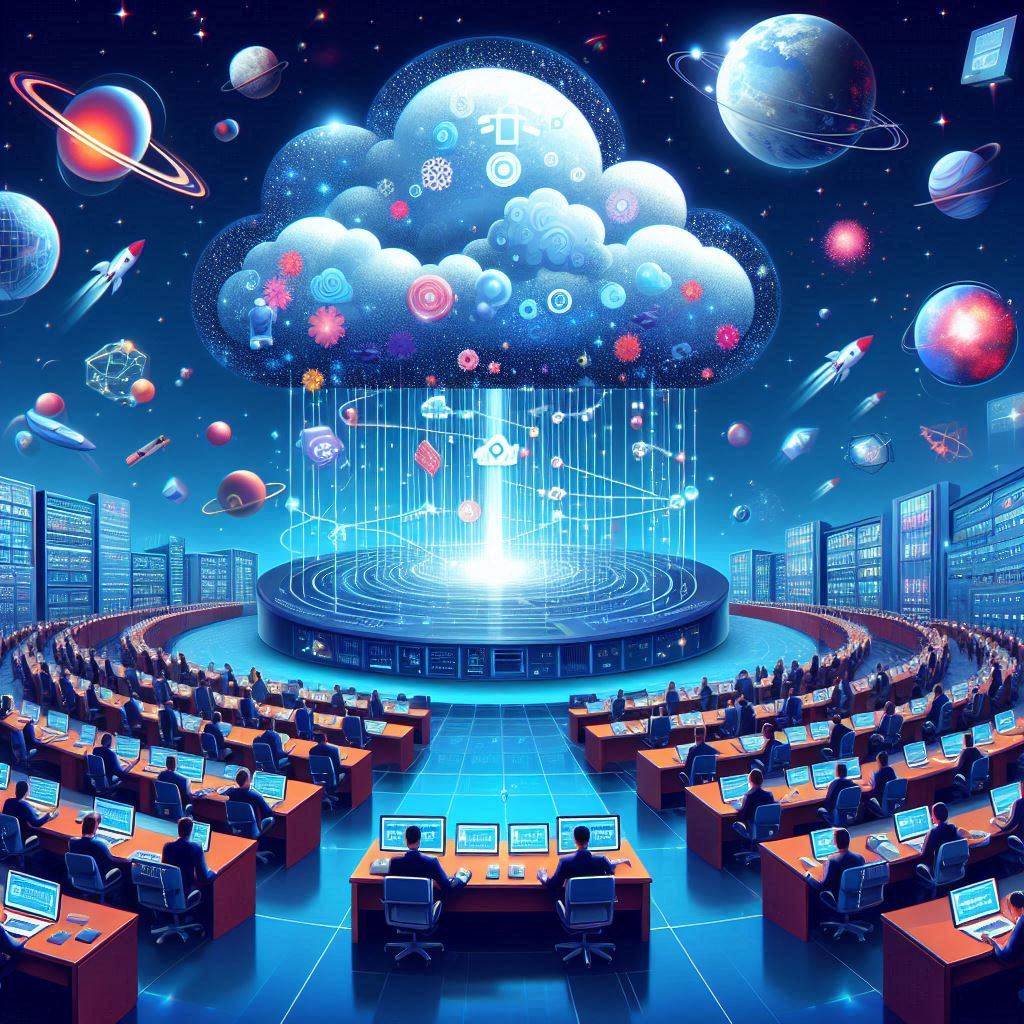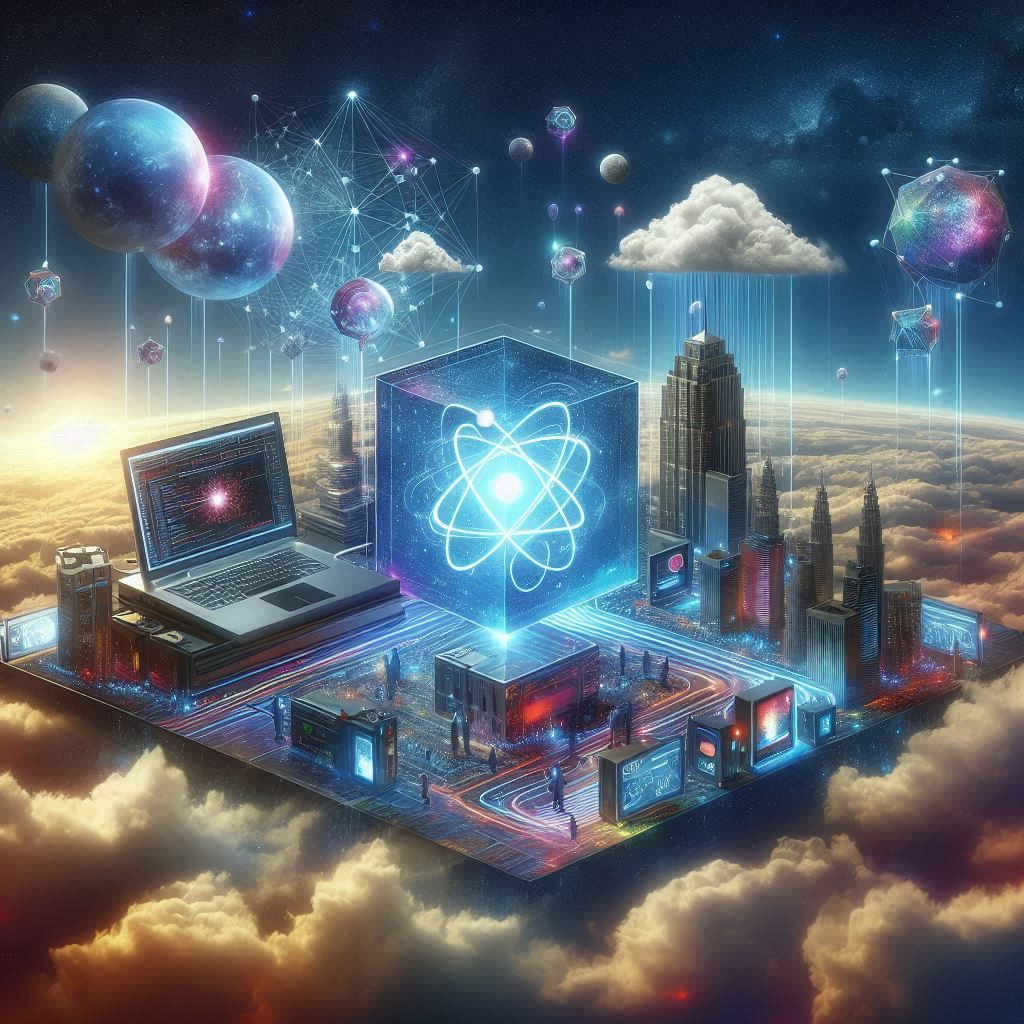Imagine the SaaS cloud as a mighty river, carrying software services across the digital landscape like water flowing to villages. Now, enter quantum computing — not as a faster boat on this river, but as a portal to an entirely different dimension of computing. If SaaS is the sky delivering rain to farms (users), quantum computing is a black hole capable of bending space-time — a tool so powerful, it doesn’t just deliver answers; it alters the very rules of finding them.

Where SaaS brought software to our browsers, quantum computing might one day bring reality-bending insight to our fingertips.
From Classical Clouds to Quantum Storms
You ask for software; it delivers — like ordering food through an app.
Quantum computing, on the other hand, operates in probabilities, superpositions, and entanglement — a language closer to magic than mathematics. Where a traditional server answers one question at a time, a quantum system could evaluate a million possibilities simultaneously, like a choir singing every note of a song at once, and you hearing only the most beautiful harmony.
Tashbeeh: The Chessboard and the Dream
Think of classical SaaS as playing chess on a normal board. Every move is logical, sequential. But quantum SaaS? That’s like playing chess in a dream, where your knight is also a queen, and the board keeps shifting depending on where you imagine the pieces to be. It’s not about cheating the rules — it’s about rewriting the rules entirely.
Q&A: Navigating the Quantum-SaaS Nexus
Q: Can SaaS really integrate quantum computing? Isn’t it too complex?
A: It’s like asking whether a smartphone can hold a universe. On its own, no. But as quantum computing becomes more accessible via cloud-based quantum processors (like IBM Quantum or Amazon Braket), SaaS platforms can become bridges — connecting everyday users to these deep technologies via APIs and managed interfaces. Think of SaaS as the translator between users and the alien language of qubits.

Q: What kind of SaaS applications will benefit most from quantum computing?
A: Optimization-heavy fields will be the first to evolve. For instance:
- Logistics SaaS could calculate the most efficient delivery routes in real time.
- Financial SaaS might forecast markets based on multi-dimensional probability trees.
- Pharmaceutical SaaS could model protein folding with cosmic precision.
These are not just improvements. They are evolutions — like giving a microscope eyes that can see through time.
Q: Isn’t quantum computing unstable or too futuristic?
A: It’s true — today’s quantum computers are like newborn stars: powerful but unstable. But SaaS, with its flexibility and abstraction, could shelter users from this chaos. Just as early internet users didn’t need to understand TCP/IP to use email, future SaaS users won’t need a PhD in quantum physics to leverage quantum-enhanced services.
Echoes from Myth and Science
In Greek mythology, Prometheus stole fire from the gods to give humanity the gift of progress. In today’s world, quantum computing is the fire, and SaaS could be the hand that carries it safely to the people.
And just as Einstein imagined riding a beam of light, SaaS developers today must imagine riding the probability waves of quantum mechanics — building applications that not only respond, but predict, preempt, and even propose actions before users are aware of the need.
A Call to SaaS Pioneers
The convergence of SaaS and quantum computing is not a trend; it’s a threshold — the moment where software stops being a service and becomes a companion intelligence. The SaaS company that masters this fusion won’t just be building products.




